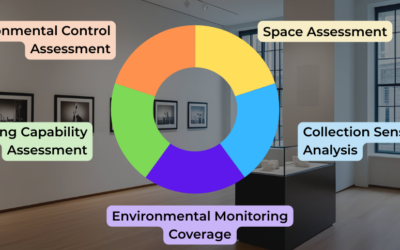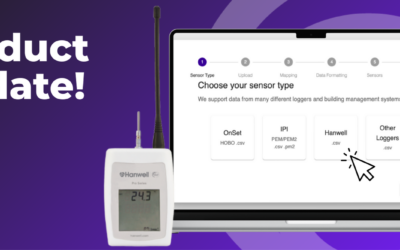We are thrilled to present the Definitive Guide to Environmental Monitoring for Collections, a comprehensive resource for preservation professionals to improve their collection environments. The preservation field is characterized by a desire to continuously learn and improve on the methods of the previous generation. This “definitive” guide is merely the latest attempt to bring together what’s known about this subject in one place. We fully expect this content to need frequent updating as the field evolves.
This guide, comprising 16 blog posts, explores a wide range of topics related to environmental monitoring and preventive conservation, providing practical knowledge for running a quality monitoring program and identifying areas of improvement for collections of all sizes and geographies.
We’d like to extend a heartfelt thank you to all the authors who contributed to this work, and to Allison Lewis for bringing everyone together to make it happen. If you’re interested in connecting with an author or engaging more on any of these topics, I’d point you toward the Conserv Community.
Environmental monitoring is not only for conservators, but for anyone involved in the care of collections.
Our belief is that great environmental monitoring happens when well-trained people have access to great technology. That’s why we emphasized how collections staff from all backgrounds can interpret and act on preservation data, and how it’s within everyone’s power to make progress:
- The ten agents of deterioration, which are the external factors that challenge the health of collection objects, were discussed in detail. We highlighted the best documentation of the ten agents of deterioration and provided practical steps that preservation professionals can take to improve their environments. I hope we clearly demonstrated the connection between these ten areas and the day-to-day work of creating a great collection environment.
- The history of preventive conservation, which is the umbrella term within the preservation world that describes actions meant to prevent damage to cultural heritage or reduce the likelihood of damage, was also discussed. We traced the evolution of preventive conservation from prehistoric societies worldwide to the establishment of museums and academic training programs. We highlighted how the concept of preventive conservation has continued to evolve into a more nuanced and inclusive philosophy that recognizes the layered values, meanings, and relationships embodied by museum collections.
- We delved into monitoring technology, discussing the evolution of monitoring tools from the mercury thermometer to the first digital data loggers. We highlighted the challenges of monitoring collection spaces in the past, such as relying on staff members to collect data and upload it to software. We also covered the most significant change to this field that occurred in these last few years – data logger companies with LoRaWAN data loggers that could more easily collect data in difficult collection environments and wirelessly upload it.
- Lastly, we concluded by discussing the importance of securing funding for environmental monitoring programs or HVAC upgrades. We provided useful tips to guide institutional leadership in understanding that funding these improvements should be seen as an investment that pays dividends rather than simply burns money. A properly planned upgrade can increase sustainability, asset protection, and reduce expensive maintenance and emergency repair costs.
We hope that this Definitive Guide to Environmental Monitoring for Collections has provided valuable insights for preservation professionals. We believe that environmental monitoring is critical for preserving our cultural heritage for this generation and the ones that follow. Thank you for joining us on this journey, and we look forward to continuing to work together to protect our cultural heritage.





